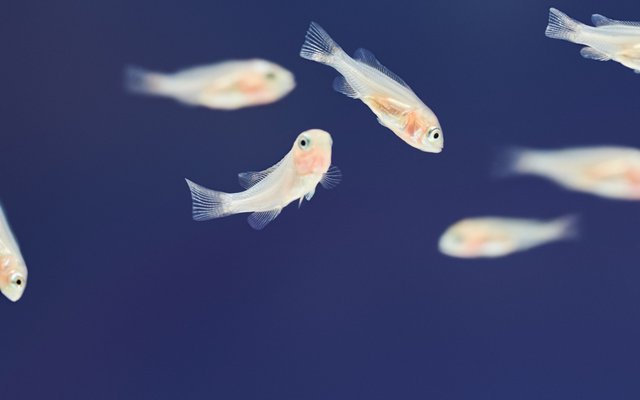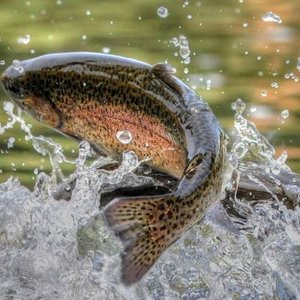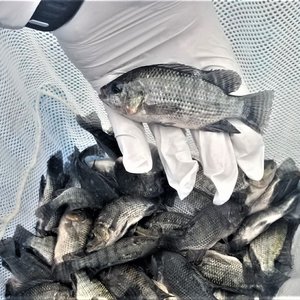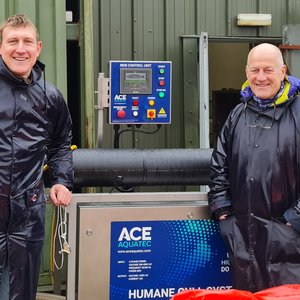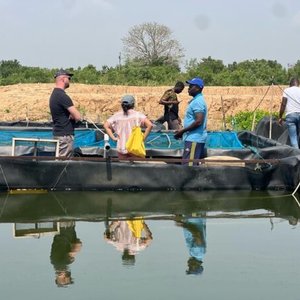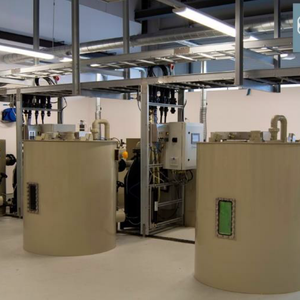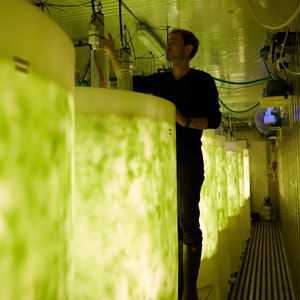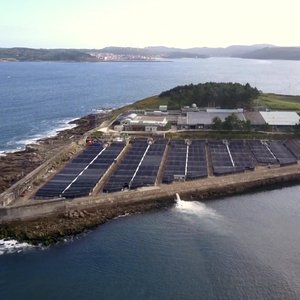Tilapia is the common name of several farmed cichlid species with a global annual production of 6,100,719 t in 2020 (FAO, 2022). Nile tilapia (Oreochromis niloticus) is the most popular species used in aquaculture and the third most farmed finfish species worldwide with 4,514,615 t produced in 2020 (FAO, 2022).
The importance of selective breeding
“Tilapia has been behind terrestrial species and some aquatic species in adopting advanced genetic methods because of low returns and market structure,” said Alan Tinch, VP of Genetics at the Center for Aquaculture Technologies (CAT). Despite this later adoption, selective breeding programs have been crucial for the development of tilapia farming, with the focus over the past few decades mainly on improving animal growth.
Tilapia species are highly responsive to genetic selection. José Mota-Velasco, senior breeding program manager at Xelect, explained it with an example. “A local strain of Nile tilapia can typically take around 48 weeks to harvest at 400g in ponds. After five generations of 10% improvement in growth, it would only take 26 weeks to reach that same harvest size. That’s a remarkable improvement of five months to harvest. This would also mean a reduction in production costs, because of the lower risk of losses, quicker turnaround time per crop and lower overhead costs.”
In the short to medium term, genomic selection, multitrait selection, and developing strains with resistance to emerging diseases will be key developments, said Hideyoshi Segovia Uno, general manager at Benchmark Genetics Tilapia.
“Breeding is needed on resistance against pathogens that impacts the early phase of production when the fish are too small to be vaccinated by injection. Mortality early in the cycle is currently having a significant impact in several regions and developing efficacious solutions for vaccination of small fish, i.e., by oral or immersion administration, has so far proved challenging,” said Terje Tingbø, head of commercial development tilapia at PHARMAQ part fo Zoetis.
Other techniques can also be applied to develop all-male tilapia and avoid hormonal sex reversal methods. “Developing YY ‘supermales’ is a more sophisticated approach. All-male tilapia are generated by breeding male tilapia with YY chromosomes (known as YY supermales) with complementary females (usually XX natural females or YY neo-females). This technology has proved to be very successful for monosex production, as it produces almost 100% males. However, this approach is more costly compared to the conventional hormone treatment. While more complex, it is suitable for more ambitious commercial tilapia programs specialized in supplying high-quality fingerlings to national and international markets,” explained Mota-Velasco. The use of novel population-specific genetic Y-linked markers to identify the true genetic sex of individuals will also reduce the need for tedious progeny testing.
Moreover, technology is now available for genome editing (GE) of tilapia for sterility, yield, growth and disease resistance, said Tinch. “Several tilapia-producing countries now permit the production of GE tilapia where the edits are indistinguishable from natural mutations – they are non-GMO because no new DNA is introduced. Tilapia are likely to be the first major aquatic species to use GE to improve performance.”
Selective breeding can also be a useful tool to develop new hybrids. “For example, some projects aim to create a hybrid of tilapia, more saline tolerant, to be able to culture it in brackishwater or seawater. This will be a huge solution to expand the tilapia production in new areas such as in river delta,” Yoav Rosen, global marketing director, Aqua, ADM Animal Nutrition, said.
Even so, it seems the dominant position of Nile tilapia is not expected to change unless a hybrid offers significant farming advantages, said Simon Hill, senior business development at CAT.
Disease challenges
Diseases are one of the main challenges of tilapia farming. The main disease affecting tilapia worldwide is streptococcosis, caused by Streptococcus agalactiae and Streptococcus iniae, with an estimated cost to the industry of USD 1 billion annually. Other diseases of concern are caused by viruses, such as the tilapia lake virus, said Christian Delannoy, global product manager health at Skretting. “Vaccination, genetic breeding, and nutrition are tools that can increase robustness, but there is no single bullet. These tools should be combined with good farming practices and proper biosecurity measures.”
Recent developments of disease-resistant strains include genetic markers for resistance to Streptococcus iniae by Benchmark Genetics and steptococcosis-resistant tilapia by GenoMar Genetics.
Meeting the nutritional requirements through quality feed is one of the strategies and key to animal health. “Functional feed solutions are a growing specialty within the aquaculture industry and may optimize aqua species health and help minimize the risk of antimicrobial resistance. Functional feeds include ingredients with demonstrated benefits that can be incorporated into complete feeds to enhance synergies to support aqua species’ growth and resilience,” said Rosen.
“Functional ingredients can also be included into feeds to improve vaccination response or robustness when meeting challenges,” Delannoy said. Probiotics and bioremediation solutions have also shown remarkable results at hatcheries and farms, improving gut health, boosting the immune system, and increasing disease resistance, Segovia Uno said.
To prevent disease and reduce the use of antibiotics, the application of vaccines is increasing steadily in tilapia farming. Still, only a small percentage of the fish produced globally are vaccinated. “The farmers’ ability to invest in new technologies is often limited due to small profit margins, and fish buyers, in many cases, do not reward sustainable practice. As we see it, the challenge will be to elevate these farmers to a level where farming practice and profits can enable and encourage investment in vaccines and other types of sustainable technologies,” Tingbø said.
Currently, vaccination is most common in consolidated and industrialized markets, such as Brazil, Mexico, Honduras, Costa Rica and Colombia. “Technology and knowledge from decades of work in the salmon industry are being applied to the benefit of tilapia, both with regards to diagnostics, vaccine development and equipment for injection,” said Tingbø.
Hill suggests that the ideal defense against disease would be to grow high-quality juveniles to c. 30g on land and vaccinate them before introducing them into open water. “This, however, requires capital investment into suitable facilities for land-based nurseries and the associated water treatment.”
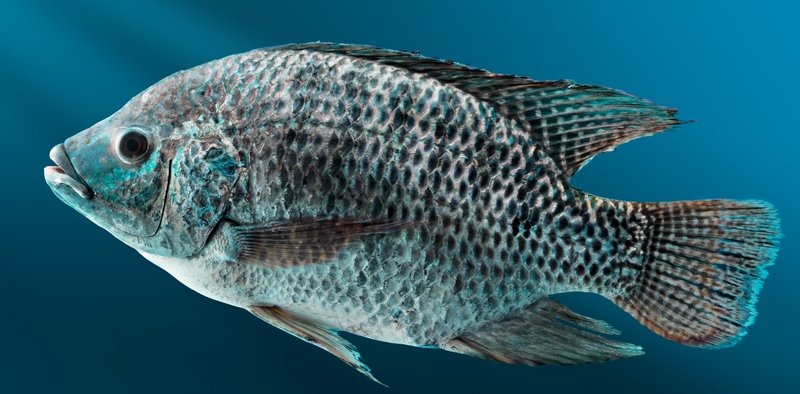
Credits: Skretting
Two industries running at different speeds
The tilapia industry is segmented, with a large percentage of production being carried out by small and medium-sized producers, while the remaining percentage is accounted for by larger producers.
“Larger producers are more industrialized, and they can invest in intensification and new technologies such as aeration in cages and ponds, In-Pond Raceway Systems (IPRS), etc.,” Segovia Uno said.
“We see a trend where tilapia hatcheries and nurseries are increasing in scale, using RAS technology at least during the weaning period, and formulated starter feeds to set performance not only during early life but also affect farming success during grow-out,” said Arjen Roem, marketing director, Nutreco SEA.
On the other side, small producers are, to a large extent, family-owned farms that produce fish for local markets at low prices further away from intensification since margins are very low. But how can small-scale farmers keep their businesses affordable?
“Basic improvements, such as education and training in aquaculture and fish health management, availability of diagnostic tools, access to quality fingerlings and feed, and proper regulation by authorities will be key to facilitating healthy and sustainable growth,” said Tingbø. “Joining a certification scheme could also be a good way to improve and document the level of standard on aspects such as animal welfare, health, management, food safety and environmental impact.”
“One way that smaller scale farms and hatcheries could counter this would be to join together in cooperatives to bring some of the benefits of scale while retaining the independence of small scale farming operations,” Hill said.
“Farmers often share the same water and disease at one farm poses a risk to neighboring farms. Sharing best practice and agreeing on an area management plan can therefore be mutually beneficial for farmers that are using the same body of water,” commented Tingbø. “Capacity building and innovation can be accelerated through collaboration with other stakeholders such as academia, authorities and suppliers.”
Collaborating by sharing knowledge and providing training is also another way to make farms more economically viable. An example is Skretting’s online e-learnings in collaboration with Blue Planet. “The training included six complete modules about topics such as water quality, genetics and feed management. They are freely accessible to anyone interested. African farmers have not only started to educate themselves but are also using the tool to train their staff. As the tilapia e-learnings were received so well we are currently working on the same concept for African catfish,” said Mahmoud Haidar, manager Nutrition & Formulation at Nutreco Middle-East & Africa Export.
Increased aquafeed costs
“The costs of energy, production inputs and staff are a major challenge at the moment, along with water quality management, disease control and biosecurity, nutrition, broodstock management and development, and stocking densities,” Segovia Uno said. In the context of high prices, some hatcheries are purchasing lower-quality feeds.
“The quality of the early feed directly impacts production efficiency. Improving aquaculture productivity and performance at the hatchery and beyond relies on high-quality nutrition solutions introduced at the nursery phase. Farmers and scientists alike understand that juvenile fish are repeatedly subject to stressors that may severely impact their health both in the short- and long-term, which may subsequently impede their physiology and growth performance. Farmers who invest in quality feed for early life stages can help their tilapia overcome these stressful phases and progress to maturity,” Rosen said. “With a premium and high-quality nursery stage feed, commercial fish farms are investing in a holistic precision nutrition approach adapted to support productivity and resiliency, helping more juveniles advance to grow-out stages.”
“High-quality hatchery and nursery feeds are essential to provide the right amount of nutrients and utilization efficiency for maximum growth. Physical properties of high-quality feed, such as water stability, sinking rate and pellet diameter, minimize nutrient loss and feed waste in the culture water. This results in better growth of fry and fingerlings,” Haidar said. “Low-cost feeds often imply sub-optimal nutritional quality and low physical pellet characteristics. Under these unfavorable conditions, fish will not meet their genetic growth potential.”
Hill agrees. “The temptation to reduce costs by using low-quality feeds is a clear false economy, particularly when using high-quality genetics. Education and empirical data showing that using better quality feed yields a greater economic profit are essential to improving profits for tilapia farmers. There would be a benefit from feed companies and genetics businesses collaborating to produce field data to support the value case for using high-quality genetics and feed together,” Hill suggested.
“Farmers need to maximize performance and streamline their production costs, both of which rely on improved efficiencies. To optimize efficiency, precise nutrition formulations can help support both goals. Feed rations must also be adapted to address the environmental conditions of specific regions and seasons for full optimization,” Rosen concluded.


